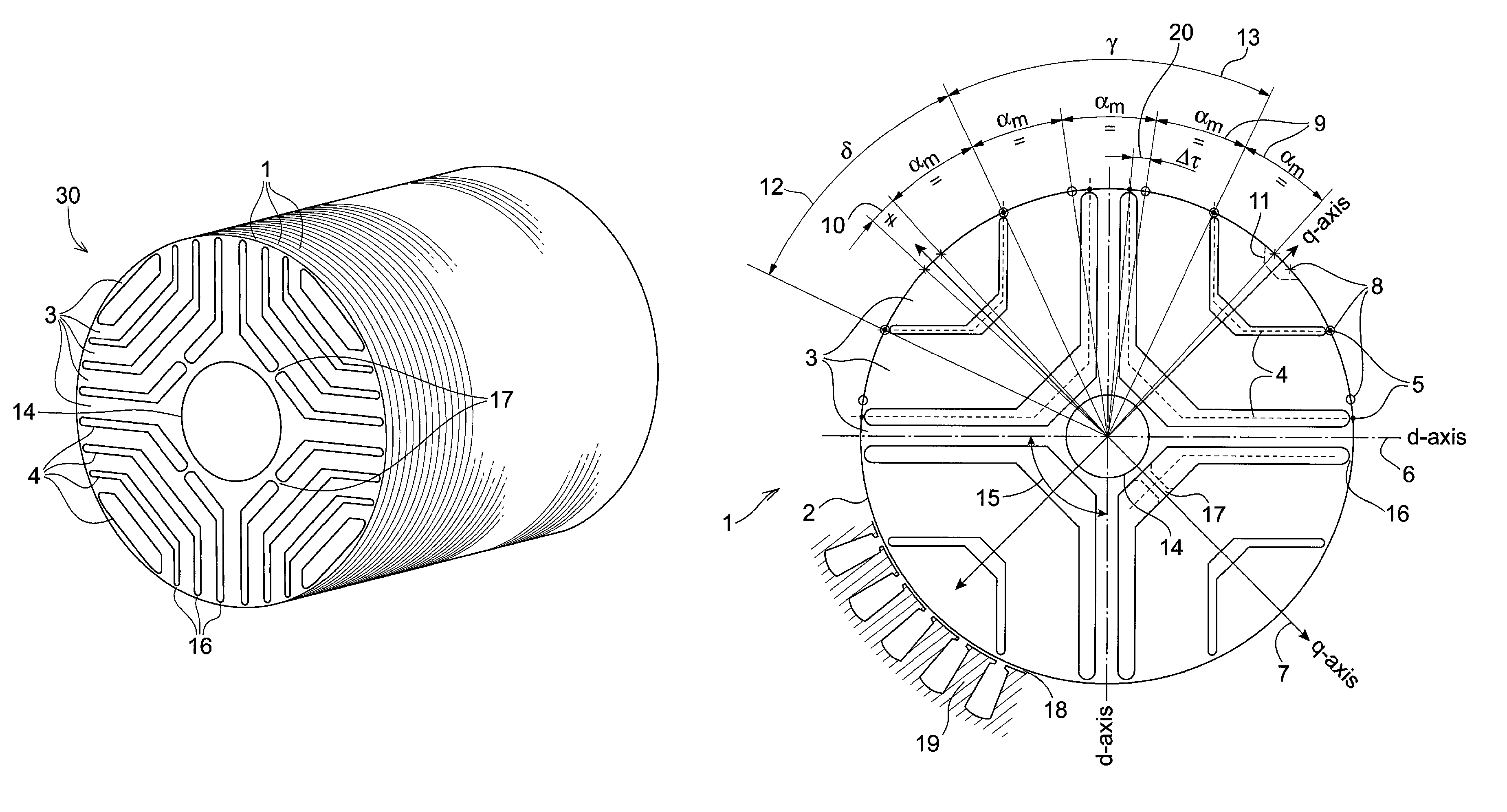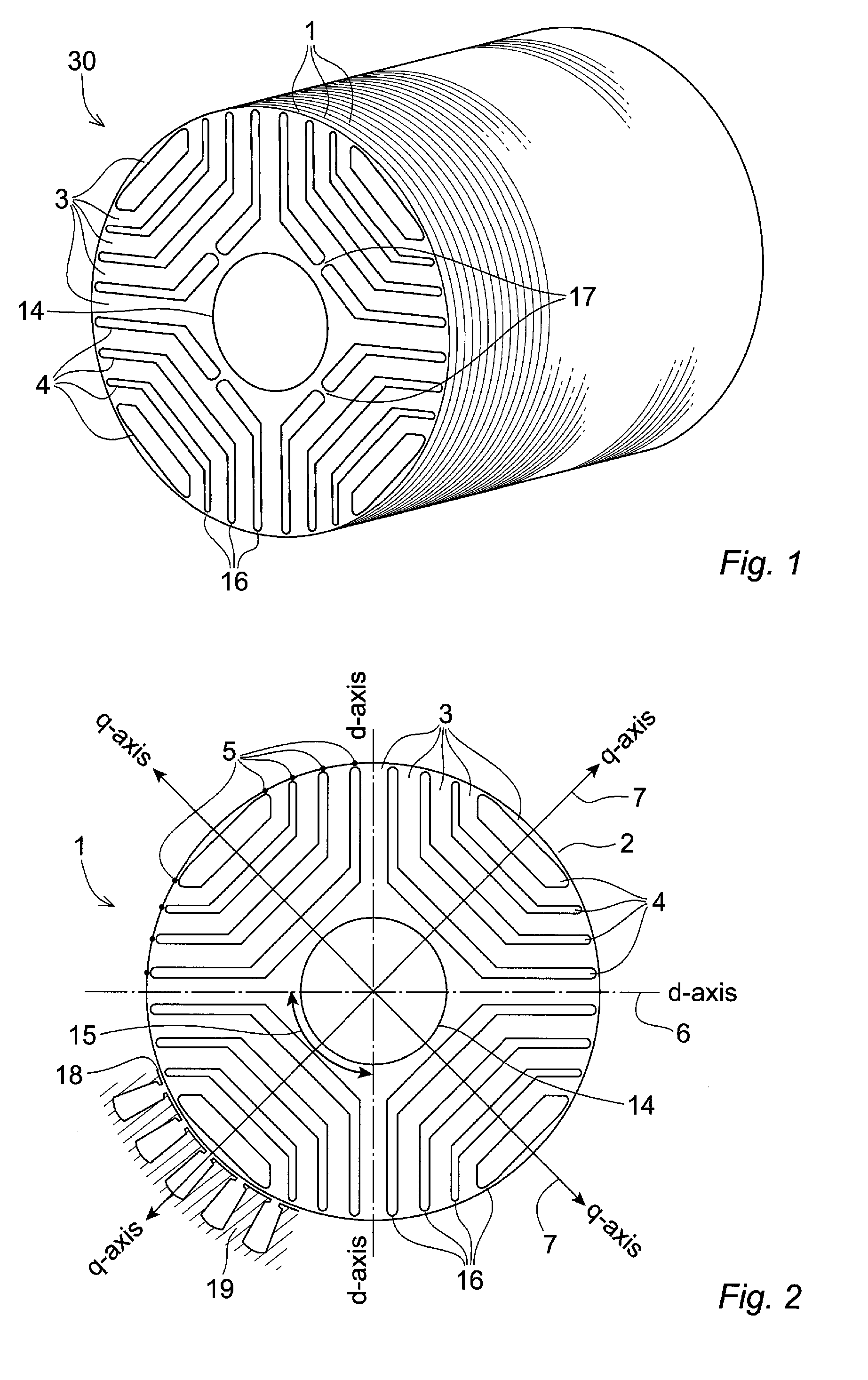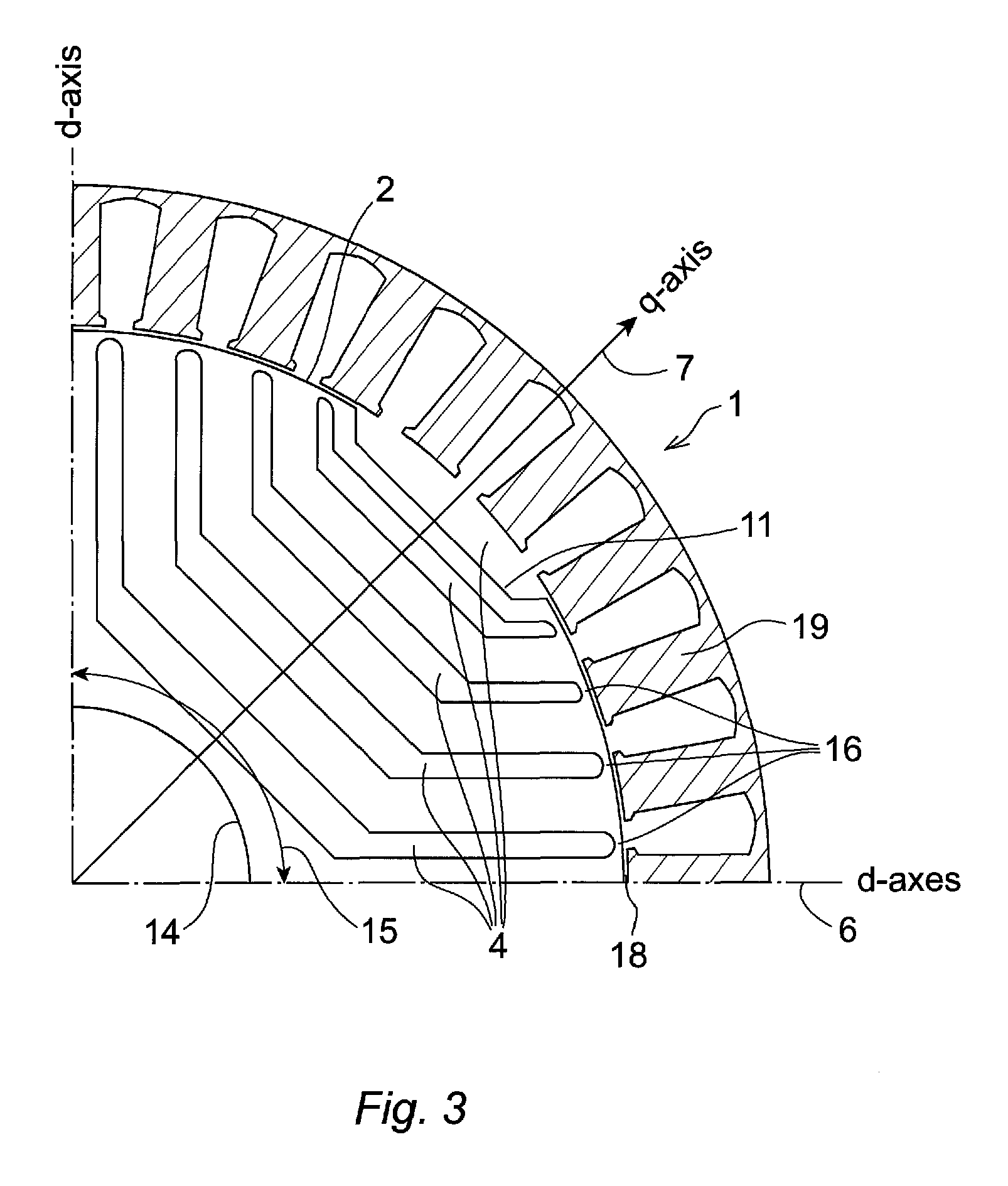Rotor for a synchronous reluctance machine
a synchronous reluctance machine and synchronous technology, applied in the direction of dynamo-electric machines, magnetic circuit rotating parts, magnetic circuit shape/form/construction, etc., can solve the problem that the rotor designed according to the conventional design principles still exhibits high torque ripple, and achieves the effect of improving the effect of torque ripple behaviour
- Summary
- Abstract
- Description
- Claims
- Application Information
AI Technical Summary
Benefits of technology
Problems solved by technology
Method used
Image
Examples
Embodiment Construction
[0028]FIG. 1 shows a rotor 30 according to one embodiment of the invention, the rotor 30 essentially consisting of a stack of thin rotor discs 1.
[0029]FIG. 2 shows a rotor disc 1 for a rotor 30 according to one embodiment of the invention. The depicted rotor disc 1 comprises four pole sectors 15, each pole sector 15 comprising five segments 3 made of a material with a high relative magnetic permeability. Each of the five magnetically permeable segments 3 has an arm-shaped form extending between two predetermined angular positions on the disc perimeter 2. Four insulating barriers 4 are intermittently disposed between the permeable segments 3 in a manner where an alternating pattern of magnetically permeable segments 3 and insulating barriers 4 are formed along the q-axes 7 of the rotor disc 1 from a central aperture 14 towards the disc perimeter 2. The insulating barriers 4 are separated from the air gap 18 between the rotor 30 and the stator 19 by tangential ribs 16. Optionally the ...
PUM
 Login to View More
Login to View More Abstract
Description
Claims
Application Information
 Login to View More
Login to View More - R&D
- Intellectual Property
- Life Sciences
- Materials
- Tech Scout
- Unparalleled Data Quality
- Higher Quality Content
- 60% Fewer Hallucinations
Browse by: Latest US Patents, China's latest patents, Technical Efficacy Thesaurus, Application Domain, Technology Topic, Popular Technical Reports.
© 2025 PatSnap. All rights reserved.Legal|Privacy policy|Modern Slavery Act Transparency Statement|Sitemap|About US| Contact US: help@patsnap.com



